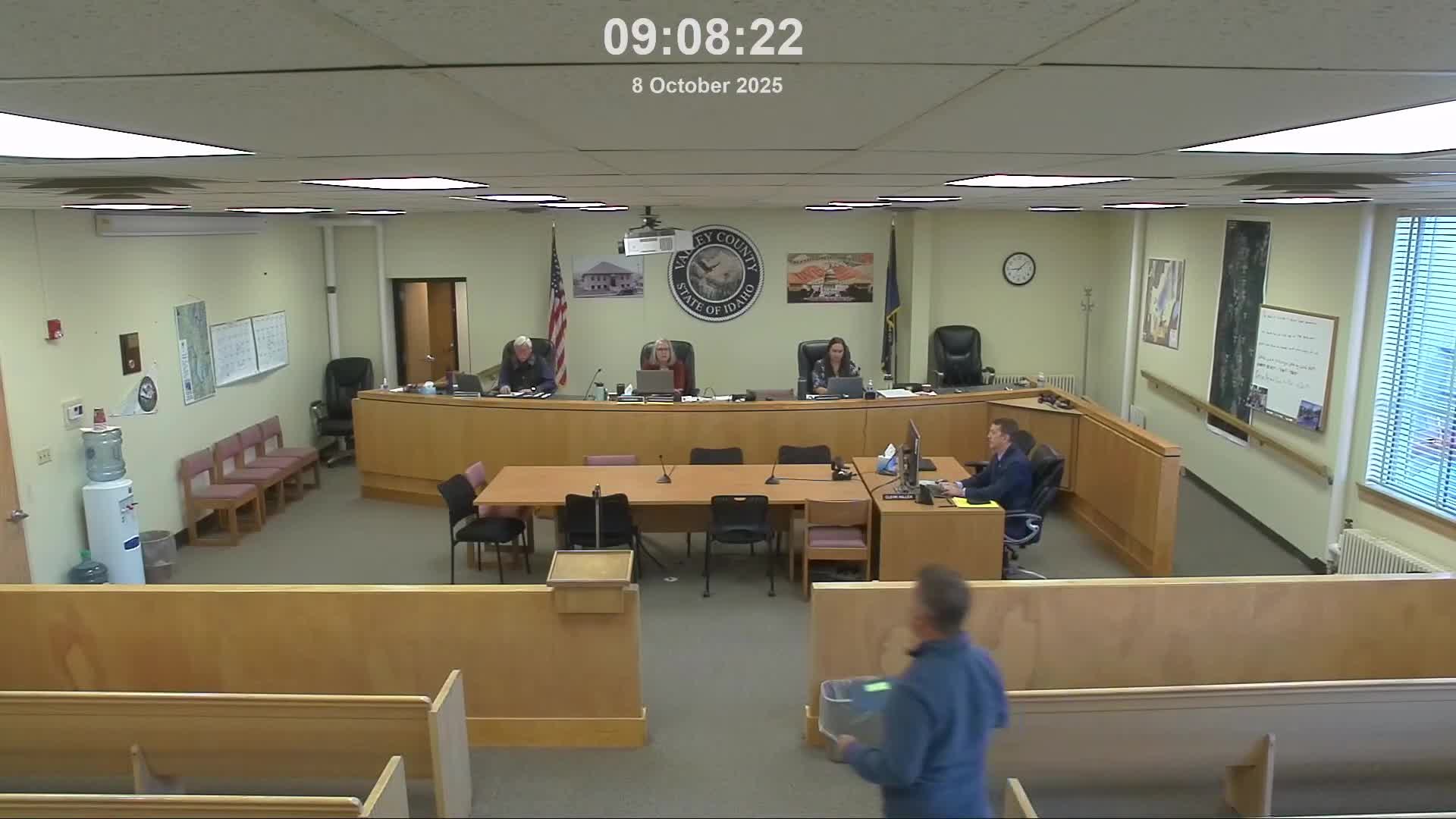Valley County shortens overtime threshold for uniformed officers to 160 hours
October 09, 2025 | Valley County, Idaho
This article was created by AI summarizing key points discussed. AI makes mistakes, so for full details and context, please refer to the video of the full meeting. Please report any errors so we can fix them. Report an error »

Valley County commissioners voted Oct. 8 to change the sheriff's office overtime calculation so uniformed officers begin earning time-and-a-half after 160 hours in a 28-day pay cycle.
The change was proposed by Director Savoy of Valley County Human Resources as part of ongoing payroll reorganization. "I am asking for your permission ... to begin to have them start earning time and a half for overtime once they've worked at least a hundred and 60 hours in a 4 week cycle," Savoy told the board during the meeting.
Savoy told commissioners the county previously used a 171-hour threshold that likely predates current staff and that the 160-hour standard aligns the county with common practice for law enforcement agencies. He said the change is not a request to increase the sheriff's overtime budget: "I am not in any way asking for an increase in their overtime budget," he said, and urged management to manage within existing appropriations.
Clerk Miller reminded commissioners that the sheriff's overtime is tracked across multiple expense lines, including regular overtime pay, holiday overtime, highway safety grant overtime and on-call overtime, and asked that supervisors and deputies be advised to track which "bucket" each overtime hour falls into.
Commissioners debated timing and oversight. Savoy said the new rule would be implemented immediately if approved. A motion to approve the change passed unanimously.
The board did not change other overtime rules such as the use of compensatory time before payout; Savoy said those procedures remain in place and that the county will review overtime budgets monthly.
The change takes effect as county payroll moves to a biweekly cycle; Savoy told the board that the county is currently operating its first biweekly pay period and expects the change to be disseminated to staff immediately.
Speakers quoted in this article are limited to those who spoke during the board's discussion: Director Savoy and Clerk Miller. No further policy steps or budget increases were approved at the meeting beyond the implementation direction described above.
The change was proposed by Director Savoy of Valley County Human Resources as part of ongoing payroll reorganization. "I am asking for your permission ... to begin to have them start earning time and a half for overtime once they've worked at least a hundred and 60 hours in a 4 week cycle," Savoy told the board during the meeting.
Savoy told commissioners the county previously used a 171-hour threshold that likely predates current staff and that the 160-hour standard aligns the county with common practice for law enforcement agencies. He said the change is not a request to increase the sheriff's overtime budget: "I am not in any way asking for an increase in their overtime budget," he said, and urged management to manage within existing appropriations.
Clerk Miller reminded commissioners that the sheriff's overtime is tracked across multiple expense lines, including regular overtime pay, holiday overtime, highway safety grant overtime and on-call overtime, and asked that supervisors and deputies be advised to track which "bucket" each overtime hour falls into.
Commissioners debated timing and oversight. Savoy said the new rule would be implemented immediately if approved. A motion to approve the change passed unanimously.
The board did not change other overtime rules such as the use of compensatory time before payout; Savoy said those procedures remain in place and that the county will review overtime budgets monthly.
The change takes effect as county payroll moves to a biweekly cycle; Savoy told the board that the county is currently operating its first biweekly pay period and expects the change to be disseminated to staff immediately.
Speakers quoted in this article are limited to those who spoke during the board's discussion: Director Savoy and Clerk Miller. No further policy steps or budget increases were approved at the meeting beyond the implementation direction described above.
View the Full Meeting & All Its Details
This article offers just a summary. Unlock complete video, transcripts, and insights as a Founder Member.
✓
Watch full, unedited meeting videos
✓
Search every word spoken in unlimited transcripts
✓
AI summaries & real-time alerts (all government levels)
✓
Permanent access to expanding government content
30-day money-back guarantee
